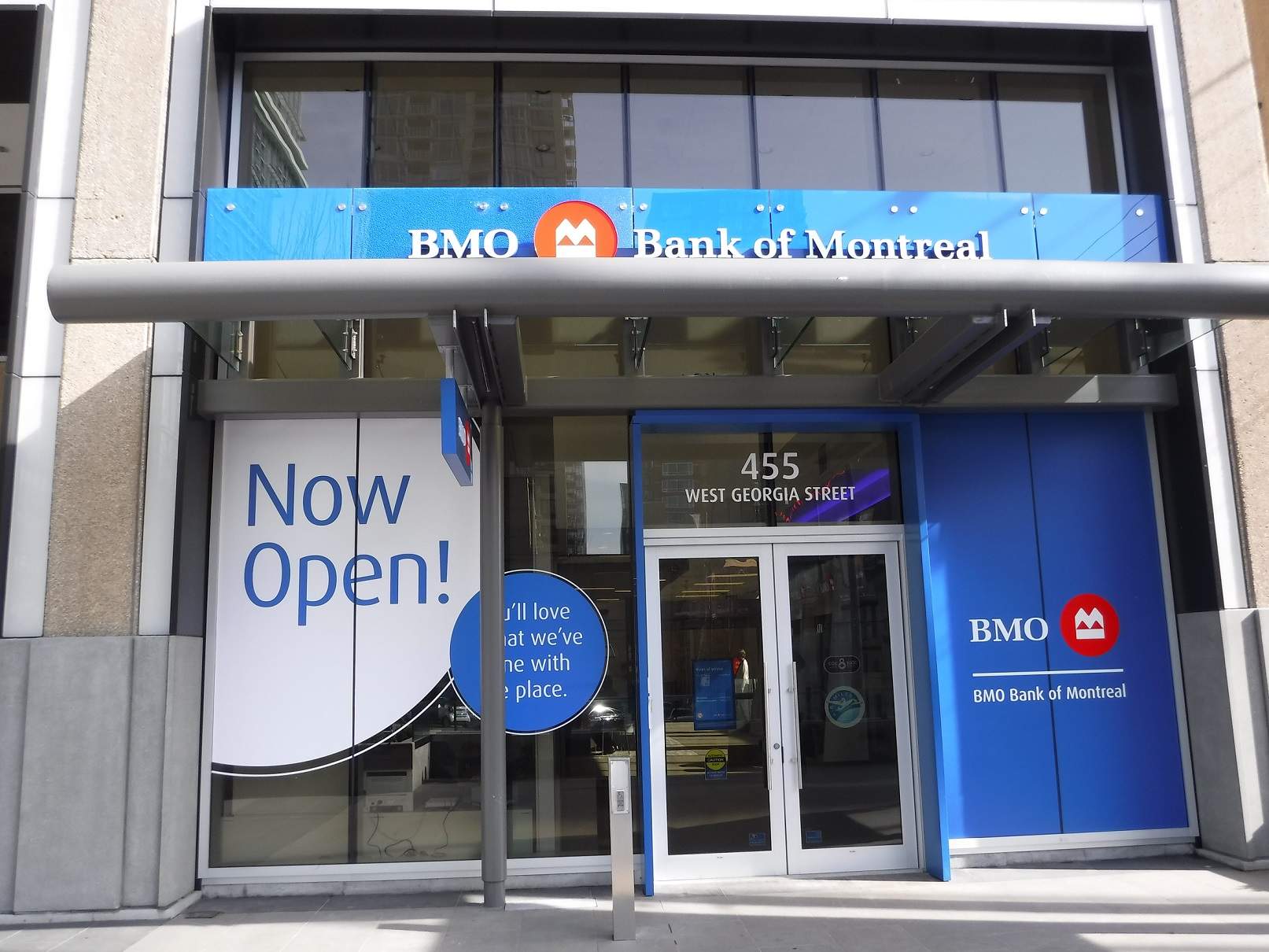A new banking environment has long been needed. Briony Richter speaks to Kyle Barnett, head of North American channels for BMO Bank of Montreal, to discuss how Smart Branches have transformed the in-branch customer experience
As customer behaviours and trends constantly evolve, so too must the environment in which they bank.

Access deeper industry intelligence
Experience unmatched clarity with a single platform that combines unique data, AI, and human expertise.
Kicking off, BMO’s Kyle Barnett discusses the need for the more open format that the
bank’s customers have found in its current Smart Branches.
“Our focus is really around our customer experience. We realised that customer expectations and behaviour are changing constantly, and so that was the primary driver as we think about this journey we are on.
“We really did a lot of work to understand how customers wanted to interact with financial institutions. From that, we got a lot of really interesting insights.”
A more approachable and personal design can bring customers together with advice-based services, coupled with the latest digital technologies to enhance the overall experience.

US Tariffs are shifting - will you react or anticipate?
Don’t let policy changes catch you off guard. Stay proactive with real-time data and expert analysis.
By GlobalDataBarnett continues: “We are constantly adjusting our thinking based on what our customers are telling us. The Smart Branch, in particular, was really a design that we believe would help us deliver for customers in a way that gave us some flexibility.
“With the Smart Branches we have the opportunity to introduce innovative technology into the physical space that helps customers with some of their more traditional banking needs, and frees up our team to allow them to have better conversations with customers.”
The Smart Branches have a smaller format than regular branches. The design allows BMO to really take advantage of new in-branch technology and match it with customer needs. As you step into one, you will not see rows of tellers behind desks waiting to be approached; as Barnett explains, it is a much more open and flexible environment.

Interaction enhanced
In recent years, banks have shifted priorities more towards the customer, developing and offering more tailored services to match consumer preferences. Although there is a shift in preference towards digital, customers across the US and Canada still desire the physical relationship that a branch can offer.
Furthermore, as digital experiences improve, many banks are rethinking the way they build and maintain customer relationships.
BMO thinks deeper engagement between staff and customers is vital. Through the Smart Branches, the bank has also created an environment where staff can actively support customers with all their banking needs.
Barnett highlights how staff at Smart Branches are becoming more interactive with customers, explaining: “What we noticed with the open format is that customers are able to engage with our bankers in different ways. We have tablets and laptops that the bankers use to help customers. Our staff move from behind desks to welcome customers in the open format.
“Part of what we are trying to drive is this personalised capability and the self-serve
capability to allow us to have greater conversations with customers. That way, we
can learn more about their needs and help them feel comfortable in this environment.”
As the world goes digital, it is becoming increasingly interconnected. BMO believes customer relationships should become more connected as well. By doing this banks can match the pace of change in both digital and physical banking.
“We have the opportunity to empower our bankers. We can cross-train them so that they can help with any potential need that a customer has,” Barnett notes.
“In a traditional branch, you might have a teller that would just do deposits or withdrawals or a banker that can do account opening and loans. What we have done in
our Smart Branches is cross-trained our teams so they can help with all of those needs. That gives our bankers the confidence and freedom to have deeper conversations.”
BMO’s training of its Smart Branch staff in multiple tasks has given them more capabilities in supporting customers. As well as helping customers with a particular task, they can also guide them, so those customers can come back next time and do the task themselves if they want.
Barnett notes that while employees are definitely able to teach customers, the
important thing is that they remain present and approachable.
“It’s been a really interesting learning curve,” Barnett says. “Customers are definitely looking for guidance. We have been able to get our people out from behind the teller wickets and have them engaging with customers.
“They can certainly demonstrate and explain, for example, how to make a deposit at an ATM. They can also do that with our mobile banking. The tablets that our bankers are using are a great tool to demonstrate how the online and mobile capabilities work.”
He goes on to detail more of the Smart Branch staff capabilities:
“They also have the ability to make adjustments if there’s a question about an account, a request to open an account or start a loan. They have the capabilities to do those more sophisticated types of actions, and have those conversations.”
The feedback has been extremely positive, and Barnett explains that although customers have taken some time to adjust to the changes, they also enjoy the variety of technologies.

Smart Branch features
You will not necessarily find the same products in all Smart Branches. The format allows for all Smart Branches to test and offer different capabilities.
“We are testing different features in different Smart Branches. In the US we have been testing the capability to use your phone to withdraw money from ATMs, so no debit card needed,” Barnett explains.
“In Canada, we have been testing offering different denominations so customers can select the type of bill they want to withdraw.”
Different debit card capabilities are also being tested in both the US and Canada.
“We also have the ability, in some of our Smart Branches, to issue debit cards. If someone loses their card, if they came to one of the Smart Branches with that capability they could have a new card issued to them on the spot – that’s specific to the US market.
“In Canada, we have the ability to issue cards at account openings, just because of a different type of service offering, but in the US we have the ability to do replacement
cards.”
As well as having staff to greet customers, check-in kiosks are also available. Customers can use them to indicate why they have come into the branch. Not only will they avoid waiting in lines, but the relevant person will be assigned to them.
If a customer has booked an appointment, then the kiosk will also signal a member of staff to let them know they have arrived.
Continuing with the theme of welcoming customers, BMO has also enabled free Wi-Fi. Customers are also able to follow instructions straight from their phone, which will make it easier in the future to carry out some banking tasks from home if they wish.

Branch future
The number of digital-only banks has surged in recent years. More predominantly, the
number has increased rapidly throughout Europe and Asia.
Although BMO is investing heavily in new technology it believes branches still have a key role to play in customers’ banking needs. Barnett says:
“There’s definitely a shift to digital, but I don’t think that means that branches will become obsolete. I think they will continue to be an important cornerstone of our business. I do agree that customers want to have choices in how they bank.”
He adds: “Having the ability to conduct banking tasks online or mobile is extremely helpful. However, there are customers that value the importance of human interaction. My view is that branches will continue to be important. They will be used for different things, and I think the way they look and feel will continue to evolve.”
BMO’s focus will continue to be enhancing the customer experience – a trend that Barnett believes is one of the biggest drivers of change.
He says: “If you look at the past five to 10 years, you can definitely see a change in customer behaviour when it comes to banking. That, in my opinion, will be the main driver in the continued evolution.
“The second driver would be the continued improvements in technology. BMO is very committed to investing in technology and committed to improving customer service. Those two things are very exciting.”
Digital capabilities within the banking industry are continuing to grow at a rapid pace. Those advances suit the format of BMO’s Smart Branches.
The popularity of harnessing both channels confirms that banking in-branch still has a major role to play, especially with regards to strengthening relationships between the bank and the customer.







